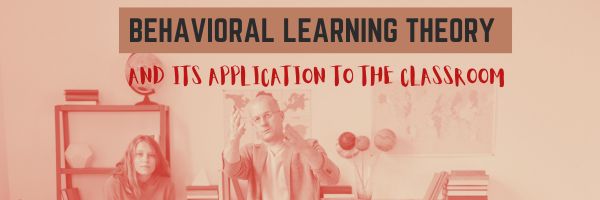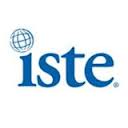The Ask a Tech Teacher team has written a great article on behavioral learning in the classroom. You’ll find out:
- What it is
- Keys to unpacking it
- Why it matters in education
- Examples in the classroom
- Techniques for applying it
- Challenges
Behavioral Learning Theory & Its Applications In Class
If you’re an educator or a parent, equipping yourself with knowledge of behavioral learning theory can transform your classroom dynamics and alter how you perceive the process of learning itself. If the entire concept is alien to you at the moment, hold tight as we talk you through the main aspects, and how they can hold relevance in modern teaching environments.
Introduction to Behavioral Learning Theory
Behavioral learning theory can sound complex, but it’s actually quite straightforward. It stipulates that all behaviors are learnt through interactions with the environment.
While biology may play a part, this theory focuses on acquired behavior and how your responses can change over time.
Conditioning is at the center of this theory, and it posits that humans learn by developing associations between their actions and the consequences they experience in real-time.
Key Principles Unpacked
Behavioral learning theory focuses on the idea that learning is a change in visible behavior caused by external stimuli in the environment. To grasp this concept better, let’s take a look at some cornerstone principles:
- Classical Conditioning: First described by Ivan Pavlov, it implies learning via association when two stimuli are paired together.
- Operant Conditioning: This was proposed by B.F. Skinner and involves learning from consequences. The behavior either gets reinforced (encouraged), or punished (discouraged).
- Social Learning Theory: Albert Bandura suggests significant learning occurs through watching and imitating others’ behaviors.
Each principle uses different mechanisms for behavioral adaptation but interconnects to give us deeper understanding of how we learn from our surroundings. And if you want to earn your psychology Ph.D. these are certainly elements that you’ll need to master.
Why Understanding Behavioural Theory Matters in Education
Understanding the behavioral learning theory can have sizable impacts on your teaching approach. Here are a few reasons why this understanding is imperative:
- Individual Pacing: Recognizing that each student reacts differently to stimuli helps accommodate varied learning paces and styles.
- Improved Motivation: With positive reinforcement techniques, you can motivate students successfully in their educational journey.
- Effective Discipline: Utilizing punishment effectively discourages unwanted behavior without harming student’s self-esteem.
Knowledge of behavioral theory empowers educators to create tailored strategies enhancing both classroom management and students’ performance efficiently. It allows an environment where students learn from external stimuli, consequential rewards, punishments, and peer influence optimally.
Examples of Behaviorism at Work in the Classroom
There are a number of ways in which behavioral learning theory manifests itself in the classroom, so here are some examples to expand your understanding further:
- Token Economies: Students receive tokens as positive reinforcement for good behavior or academic performance. These can be exchanged later for rewards, instilling a sense of accomplishment.
- Time-Outs: Used as mild punishments to correct inappropriate behavior, teaching students about consequence management.
- Modeling: The teacher demonstrates the expected behavior or task before having students repeat it. This fosters social and observational learning amongst classmates.
The bottom line is that real-life application does not need to be complicated, but instead aims to encourage desirable behaviors while reducing undesired ones through responses to environmental stimuli.
Effective Techniques for Applying Behavioral Learning Theories
If you’ve got this far and are ready to put behavioral learning theories into action, check out these practical techniques:
- Positive Reinforcement: Praise students or give rewards when they exhibit desirable behavior. This will encourage repeating such actions.
- Negative Reinforcement: Use penalties like homework or extra chores as consequence management tools, resulting in a decrease of unwanted behaviors.
- Observational Learning: Encourage group learning. Classmates watching each other learn may imitate successful behaviors seen in others.
Of course balance is the key, and positive reinforcement techniques should outweigh negative ones, while observational learning sessions must be systematically interspersed with traditional lessons to ensure all types of learners can benefit. It’s an example of how personalization matters right now.
Challenges Teachers Face While Implementing this Approach
Implementing behavioral learning techniques can certainly have bumps along the way. Here are some challenges teachers may encounter:
- Balancing Acts: Maintaining a positive environment while occasionally using negative reinforcement can be tricky.
- Individual Differences: Accommodating everyone’s learning style and pace, given that each student responds uniquely to stimuli.
- Overdependence on Rewards: The risk of students becoming solely reward-driven rather than fostering intrinsic motivation is real and must be managed carefully.
Despite these challenges, perseverance will eventually lead to a well-managed classroom where learners thrive. Tailoring strategies based on evolving needs allows for successful application of behavioral theories.
Wrapping Up
All in all, understanding and implementing behavioral learning theory effectively can facilitate a profoundly nurturing learning environment. Despite certain struggles, its thoughtful application empowers teachers and parents alike to guide students towards better behavior, engaging them actively in their own education for better outcomes in the long term.
***
For more on Behaviorism, check out this article: How Behaviorism Can Turn Your Classroom Around
Here’s the sign-up link if the image above doesn’t work:
Jacqui Murray has been teaching K-18 technology for 30 years. She is the editor/author of over a hundred tech ed resources including a K-12 technology curriculum, K-8 keyboard curriculum, K-8 Digital Citizenship curriculum. She is an adjunct professor in tech ed, Master Teacher, webmaster for four blogs, CSTA presentation reviewer, freelance journalist on tech ed topics, contributor to NEA Today, and author of the tech thrillers, To Hunt a Sub and Twenty-four Days. You can find her resources at Structured Learning.





































